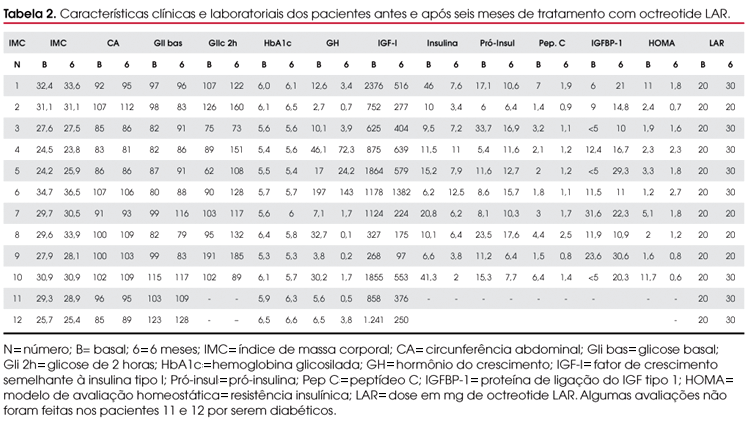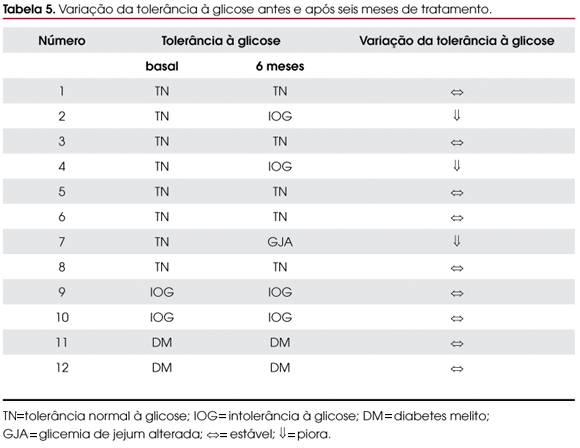AIM OF THE STUDY: To evaluate the glucose metabolism in acromegalic patients before and after treatment with octreotide LAR. PATIENTS AND METHODS: This was a prospective and longitudinal study involving 30 patients from the acromegaly research outpatient clinic of the Endocrinology unit of the HUCFF/UFRJ. They underwent clinical and laboratorial evaluations, with measurements of growth hormone (GH), insulin-like growth factor type I (IGF-I), insulin, proinsulin, C peptide, glycosylated hemoglobin (HbA1c), IGF binding protein type 1 (IGFBP-1) and glucose, during oral glucose tolerance test (OGTT), before and after six months of treatment with octreotide LAR. The Wilcoxon signed-rank test was used and values of 5% were considered statistically significant. RESULTS: We found 16 (54%) patients with normal glucose tolerance, 7 (23%) with impaired glucose tolerance and 7 (23%) diabetics. Twelve patients completed the six-month treatment, out of which three showed worsening of glucose tolerance and two (diabetics) had worse blood glucose control. Whereas there was an increase in waist circumference (p=0.03), there was a decrease in GH (p=0.04), with %IGF-I above the upper limit of reference values (% ULRV) [p=0.001], insulin (p=0.019), C peptide levels (p=0.002) and homeostatic model assessment (HOMA-IR) [p=0.039]. CONCLUSIONS: In this series, treatment with octreotide LAR led to a worsening of glucose tolerance in three non-diabetic patients and worsened glycemic control in two diabetics, in spite of reducing insulin resistance.
Acromegaly; Octreotide LAR; Glucose metabolism





